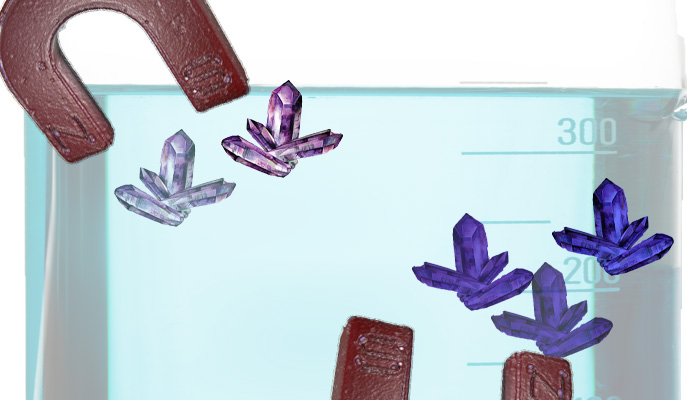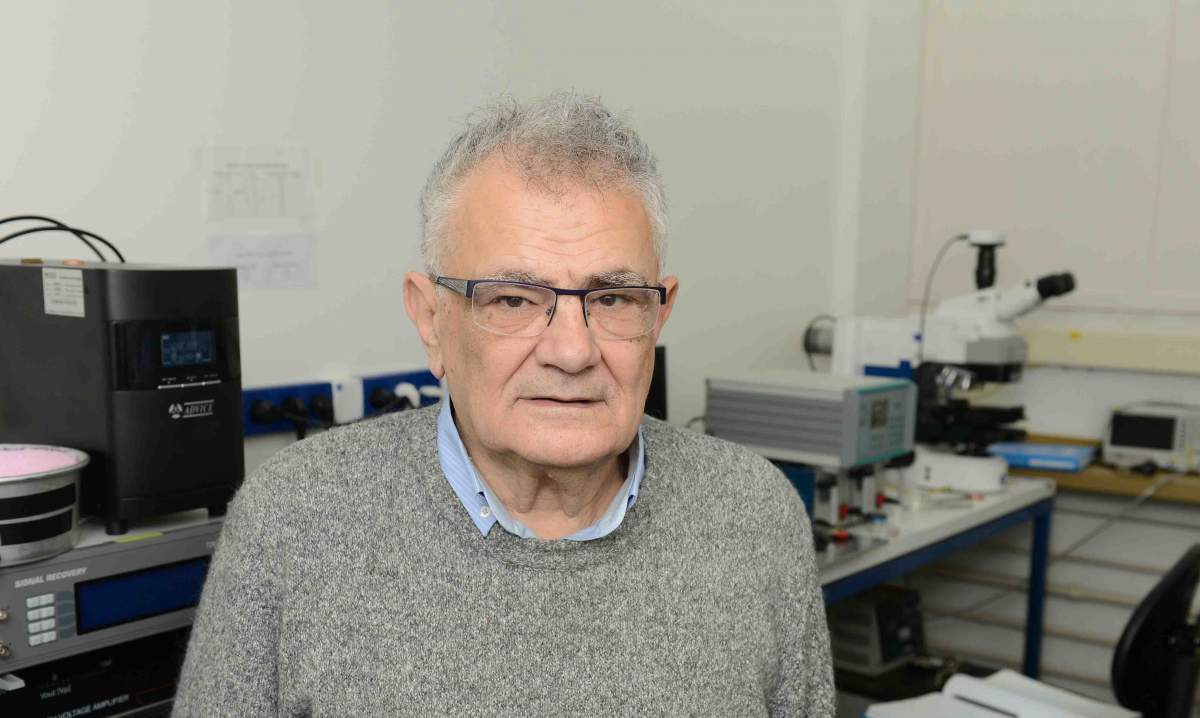Are you a journalist? Please sign up here for our press releases
Subscribe to our monthly newsletter:

In the mid-nineteenth century Louis Pasteur discovered molecular “handedness” – the existence of left- and right-handed versions of the same molecule. He separated mirror-image crystals manually, using a tweezer, and speculated that the differently handed molecules might have been created by Earth’s magnetic field. This assumption was later disproved, but recently researchers from the Weizmann Institute of Science and the Hebrew University of Jerusalem put a new twist on Pasteur’s original research – by establishing an indirect link between magnetism and molecular handedness, and exploiting this link to develop an effective method for separating mirror-image crystals.
Sorting crystals by handedness, or chirality (from the Greek word for “hand”), is crucial in the manufacture of drugs, pesticides and numerous other chemicals, because often only molecules of a particular chirality produce the desired effect, whereas those with the opposite chirality are useless or even harmful. “Existing separation methods need to be tailored individually to each type of crystal,” says Prof. Ron Naaman of Weizmann’s Chemical and Biological Physics Department. “In contrast, our approach can be applied to any chiral molecule that can form a chiral crystal, and is therefore likely to be cheaper and more efficient.” Naaman headed the study, reported recently in Chemical Science, with Prof. Meir Lahav of Weizmann’s Materials and Interfaces Department and Prof. Yossi Paltiel of the Hebrew University of Jerusalem.

The scientists took advantage of a phenomenon known as chirality-induced spin selectivity, or CISS, discovered previously by Naaman’s group. When chiral molecules interact with a surface, they become polarized according to a magnetic property of their electrons known as spin – electrons with the “spin up” gather on one side of the molecule and those with the “spin down” on the other. “The magnetic field itself does not directly affect chirality, but it does interact with the polarized spin, which is induced by chirality,” Naaman explains.
In previous studies, the scientists had already shown that CISS can help separate substances by chirality: When they exposed a solution containing right- and left-handed molecules of a substance to a magnetic surface, it was mainly the molecules with one particular chirality that stuck to the surface. This is because the spins on these molecules were opposite to those of the electrons on this surface, and two electrons having opposite spin can form chemical bonds. The molecules with the other chirality didn’t stick because their spins were the same as in the surface, and they were thus repelled.
In the new study, the researchers showed that this same approach can be applied to crystals that spontaneously form from chiral molecules. When they introduced magnetic elements into several solutions, each containing a different amino acid, only molecules of a particular chirality were drawn to the surface. Once the molecules reached a high concentration, the amino acid began to crystallize. In this manner, the scientists obtained crystals of the amino acid containing molecules of only one chirality but not the other.
“Our experimental setup was amazingly simple, yet it was also impressively effective in separating out the crystals,” Naaman says. “The method can be developed for industrial use to achieve a separation with a high degree of purity.”

The research team included Dr. Francesco Tassinari, Jacob Steidel and Shahar Paltiel of Weizmann’s Chemical and Biological Physics Department; and Prof. Claudio Fontanesi from the University of Modena and Reggio Emilia, Italy.
Prof. Ron Naaman's research is supported by the Edmond de Rothschild Foundations; the John Templeton Foundation; and the European Research Council.